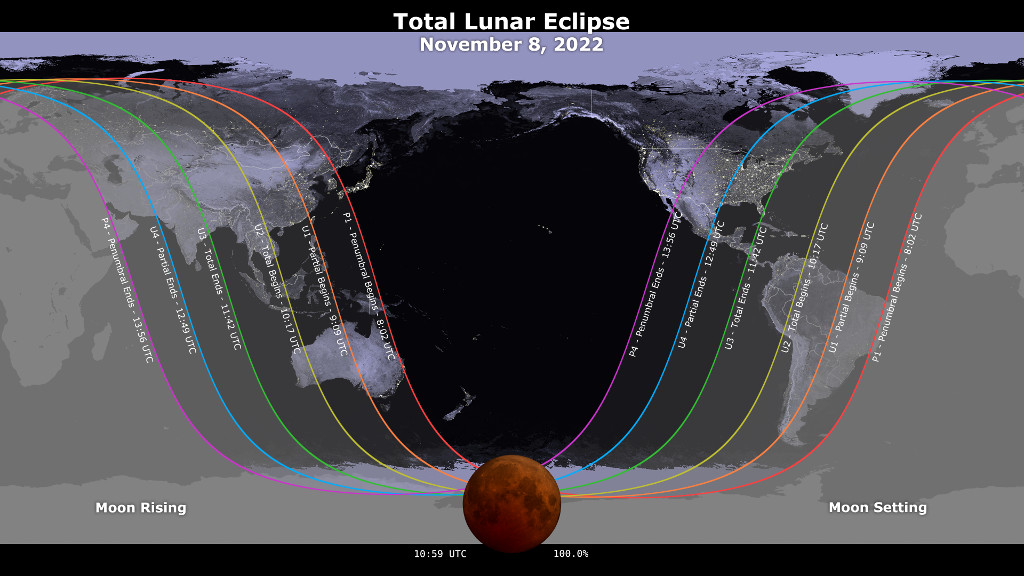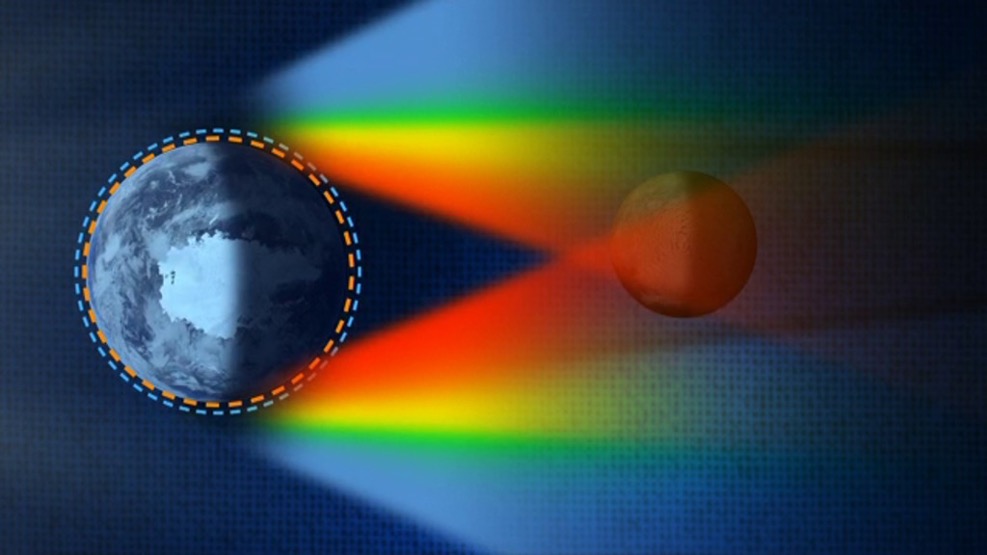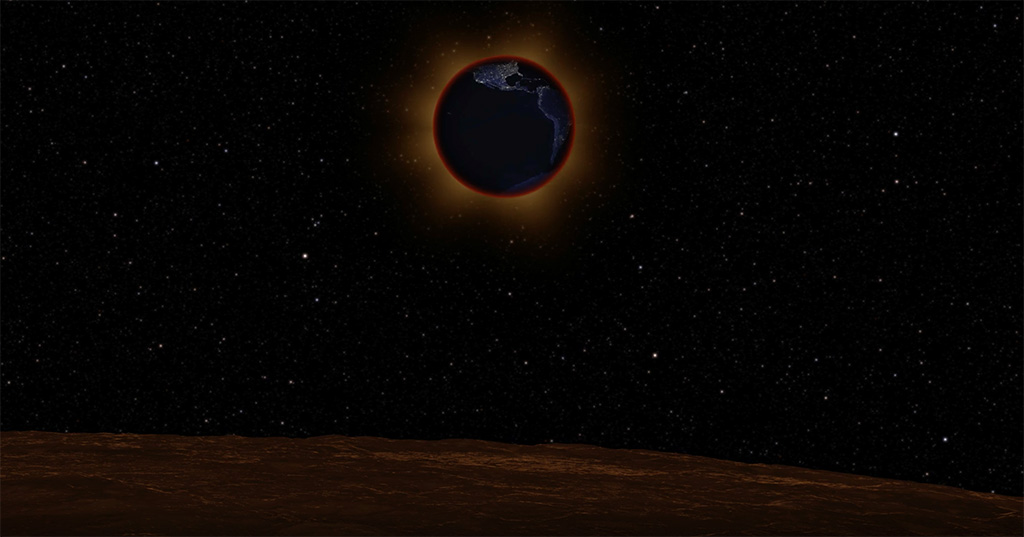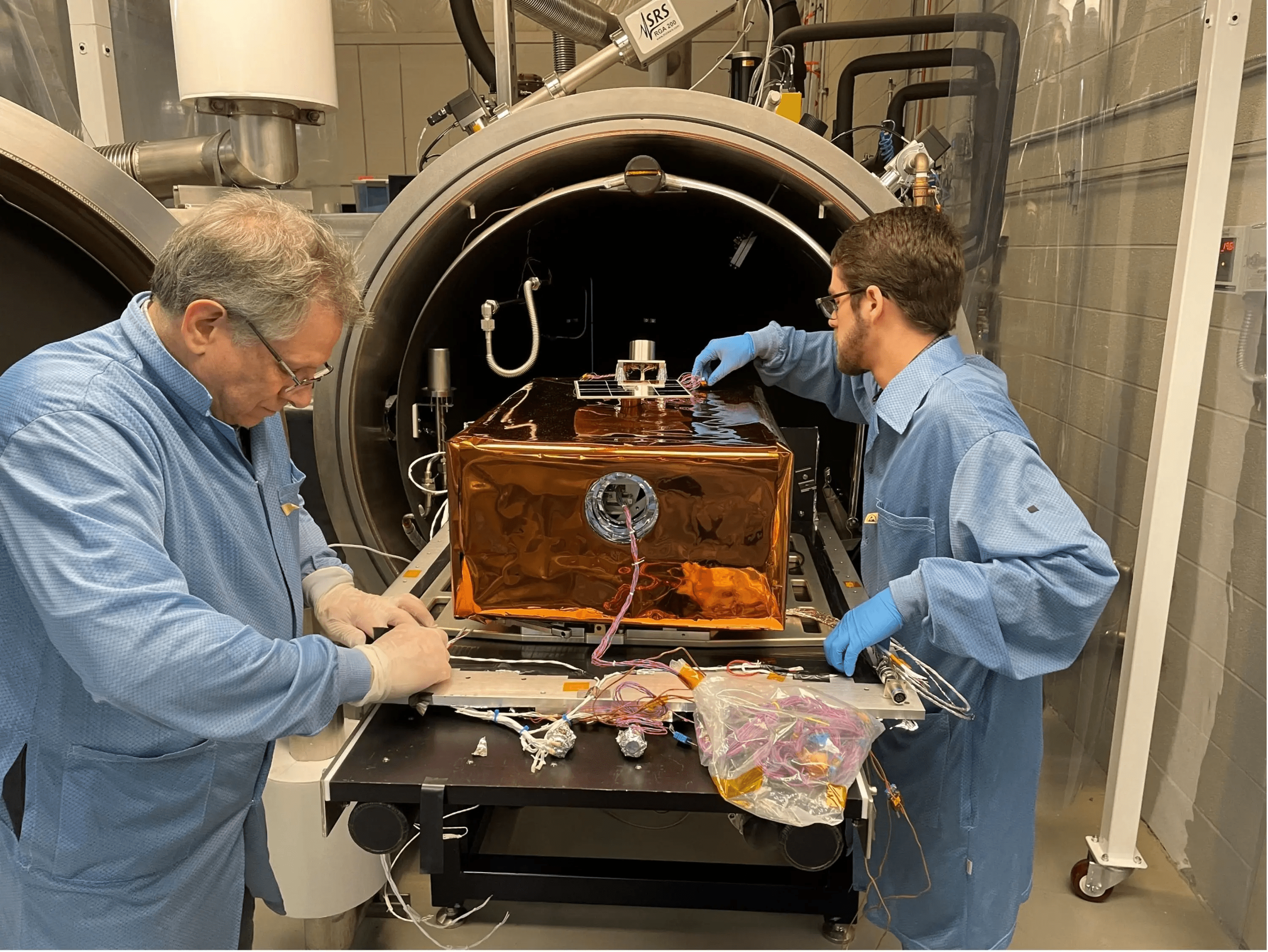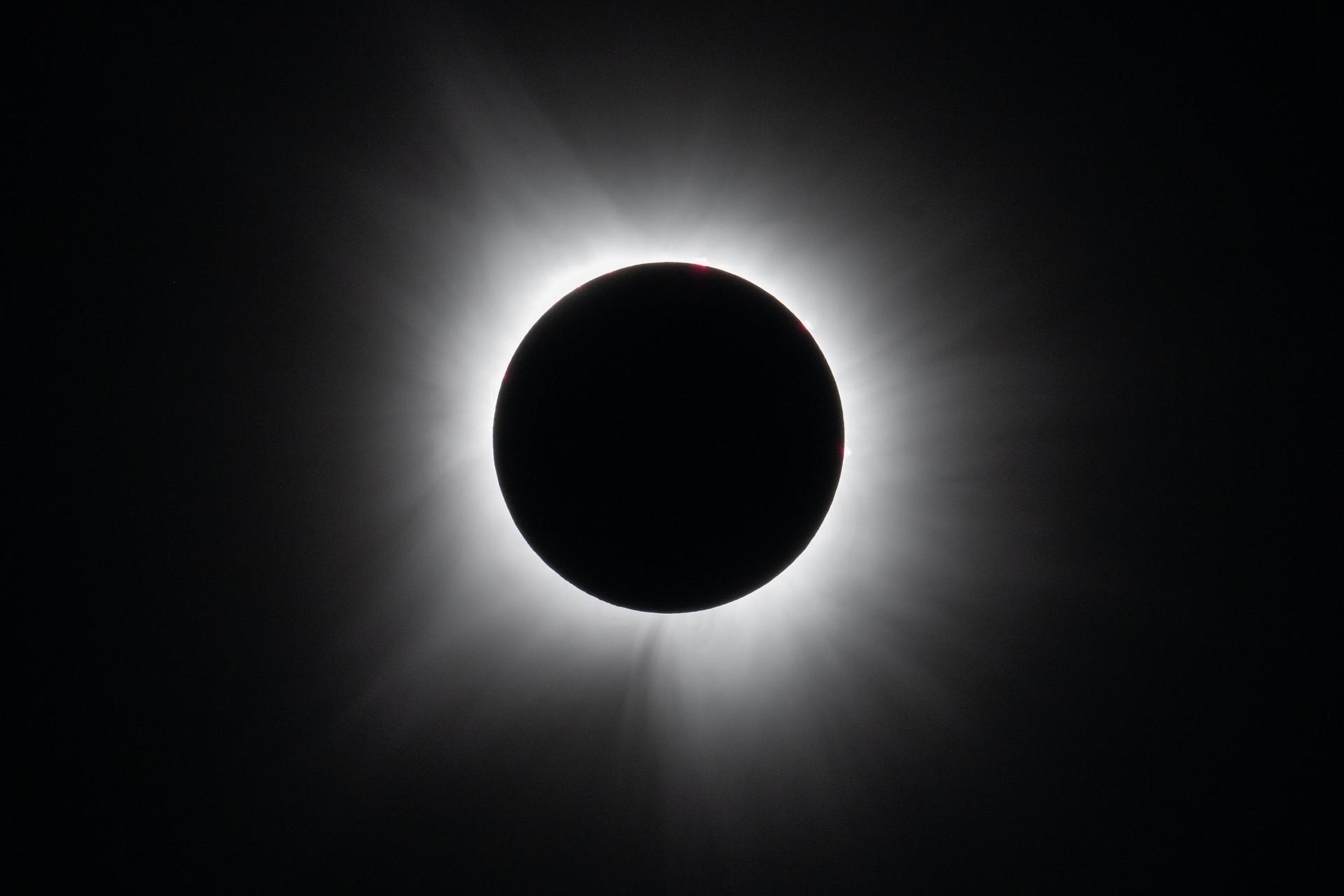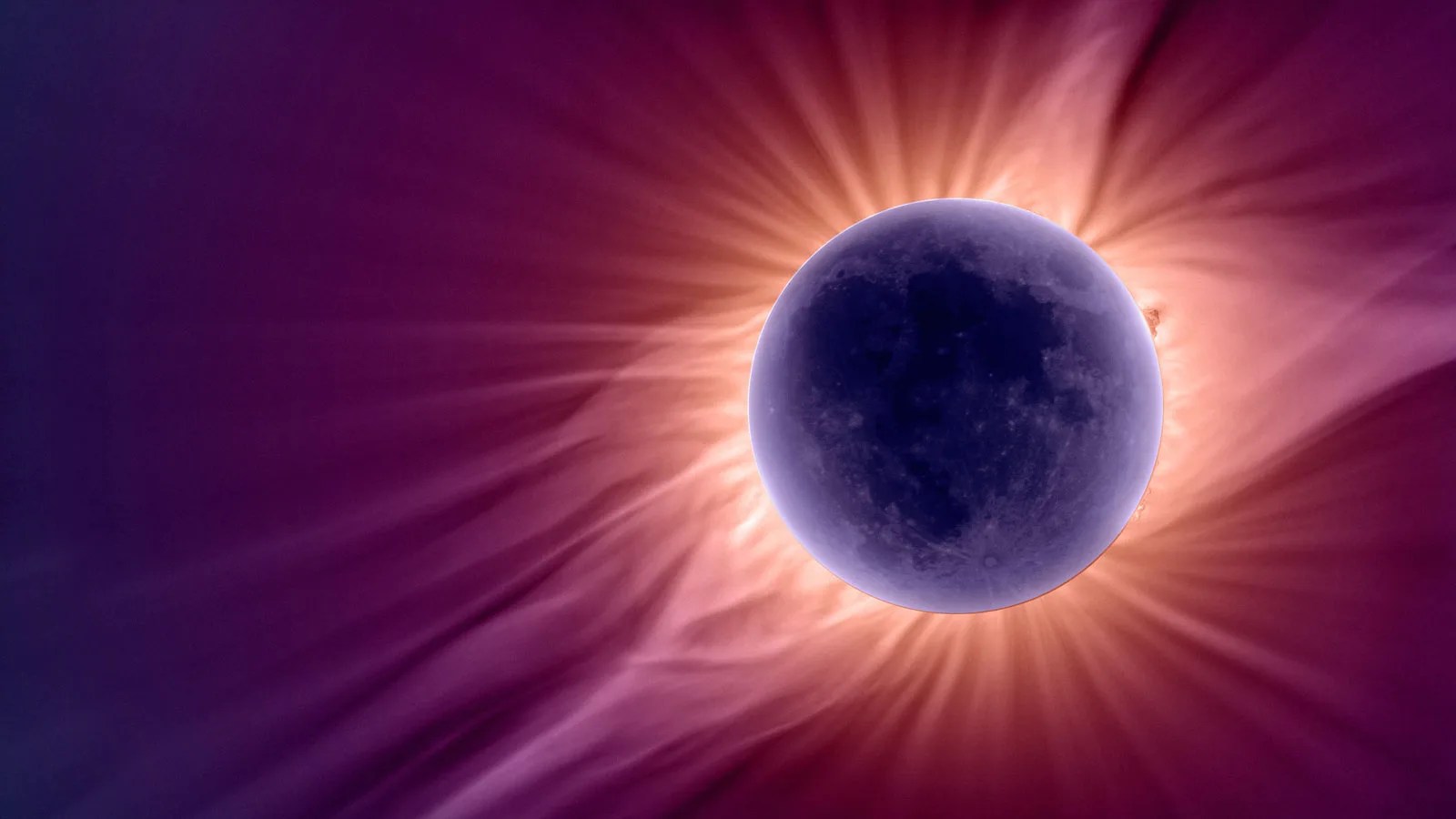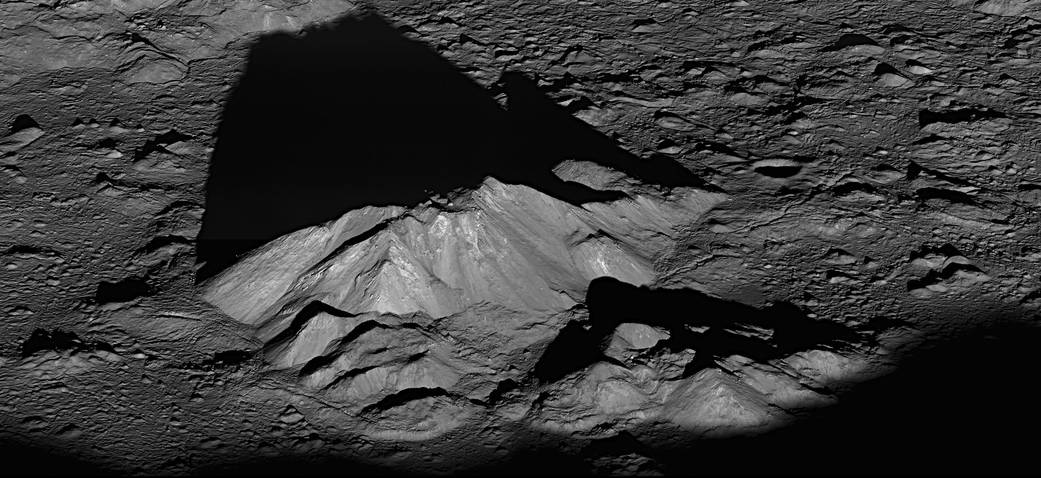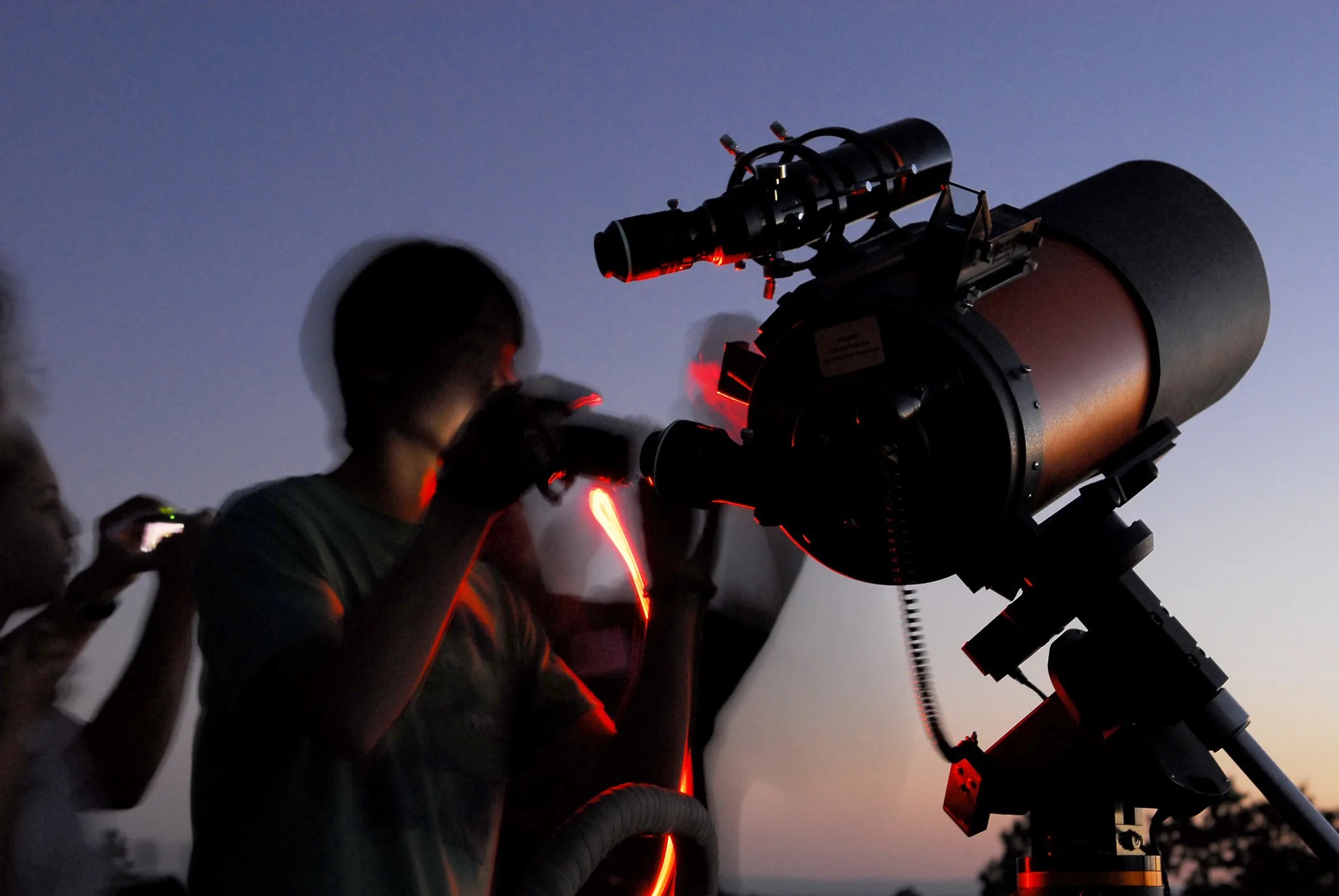4 min read
The last total lunar eclipse for three years occurs on November 8, 2022, with the next occurring on March 14, 2025 — though we will continue to see partial and penumbral lunar eclipses during that time.
A lunar eclipse occurs when the Sun, Earth, and Moon align so that the Moon passes into Earth’s shadow. In a total lunar eclipse, the entire Moon falls within the darkest part of Earth’s shadow, called the umbra. When the Moon is within the umbra, it will turn a reddish hue. Lunar eclipses are sometimes called “Blood Moons” because of this phenomenon.
You don’t need any special equipment to observe a lunar eclipse, although binoculars or a telescope will enhance the view and the red color. A dark environment away from bright lights makes for the best viewing conditions.
Totality ― the stage of the eclipse where the Moon is entirely in Earth’s shadow ― will be visible across North and Central America and in Ecuador, Colombia, and western portions of Venezuela and Peru. In Puerto Rico, the Moon sets just after totality begins. The eclipse is also visible in Asia, Australia, and New Zealand. Viewers in Alaska and Hawaii will have the opportunity to see every stage of the eclipse.
Join in online: Live Stream the November 8 Lunar Eclipse
You can also visit NASA’s Dial-a-Moon for a visualization of the eclipse.
UTC | EST | PST | Milestone | What’s Happening? |
8:02 | 3:02 a.m. | 12:02 a.m. | Penumbral eclipse begins | The Moon enters the Earth’s penumbra, the outer part of the shadow. The Moon begins to dim, but the effect is quite subtle. |
9:09 | 4:09 a.m. | 1:09 a.m. | Partial eclipse begins | The Moon begins to enter Earth’s umbra and the partial eclipse begins. To the naked eye, as the Moon moves into the umbra, it looks like a bite is being taken out of the lunar disk. The part of the Moon inside the umbra will appear very dark. |
10:17 | 5:17 a.m. | 2:17 a.m. | Totality begins | The entire Moon is now in the Earth’s umbra. The Moon will turn a coppery-red. Try binoculars or a telescope for a better view. If you want to take a photo, use a camera on a tripod with exposures of at least several seconds. |
11:42 | 6:42 a.m. | 3:42 a.m. | Totality ends | As the Moon exits Earth’s umbra, the red color fades. It will look as if a bite is being taken out of the opposite side of the lunar disk as before. |
12:49 | --- Moon has set | 4:49 a.m. | Partial eclipse ends | The whole Moon is in Earth’s penumbra, but again, the dimming is subtle. |
13:50 | --- Moon has set | 5:50 a.m. | Penumbral eclipse ends | The eclipse is over. |
The Moon will be in the constellation Aries. NASA provides a monthly skywatching tips series that will highlight additional targets to focus on in between monitoring the eclipse.
The same phenomenon that makes our sky blue and our sunsets red causes the Moon to turn red during a lunar eclipse. It’s called Rayleigh scattering. Light travels in waves, and different colors of light have different physical properties. Blue light has a shorter wavelength and is scattered more easily by particles in Earth’s atmosphere than red light, which has a longer wavelength.
Red light, on the other hand, travels more directly through the atmosphere. When the Sun is overhead, we see blue light throughout the sky. But when the Sun is setting, sunlight must pass through more atmosphere and travel farther before reaching our eyes. The blue light from the Sun scatters away, and longer-wavelength red, orange, and yellow light pass through.
During a lunar eclipse, the Moon turns red because the only sunlight reaching the Moon passes through Earth’s atmosphere. The more dust or clouds in Earth’s atmosphere during the eclipse, the redder the Moon will appear. It’s as if all the world’s sunrises and sunsets are projected onto the Moon.

